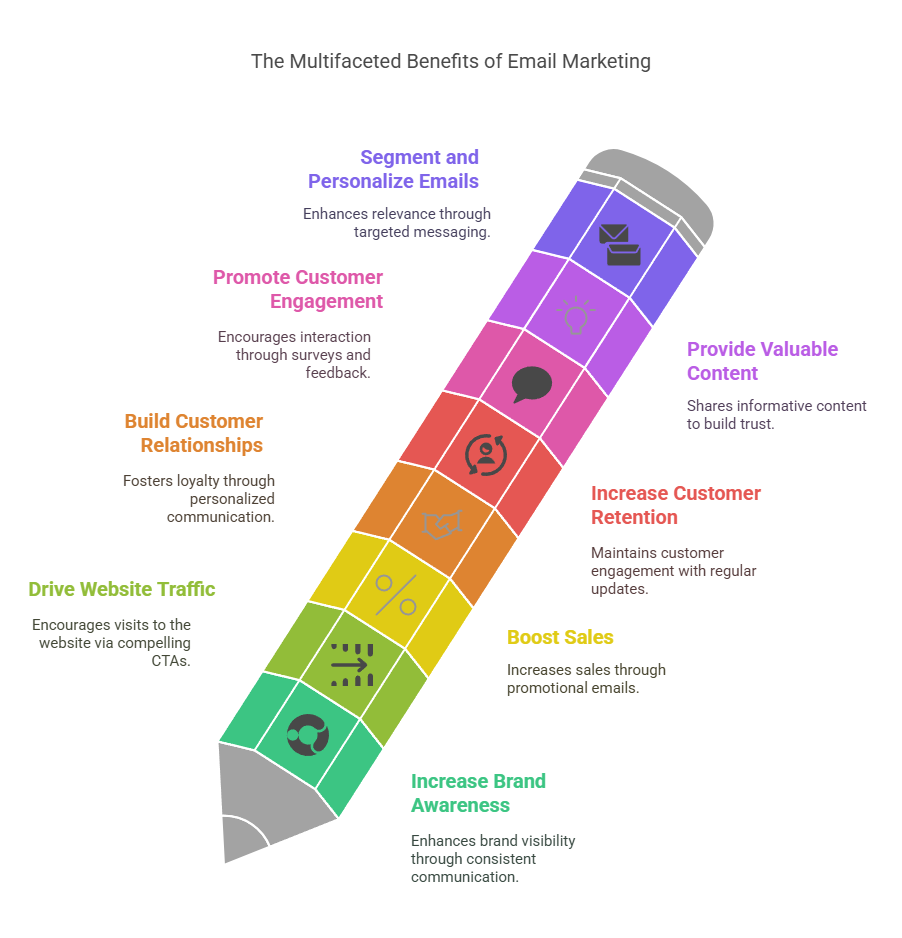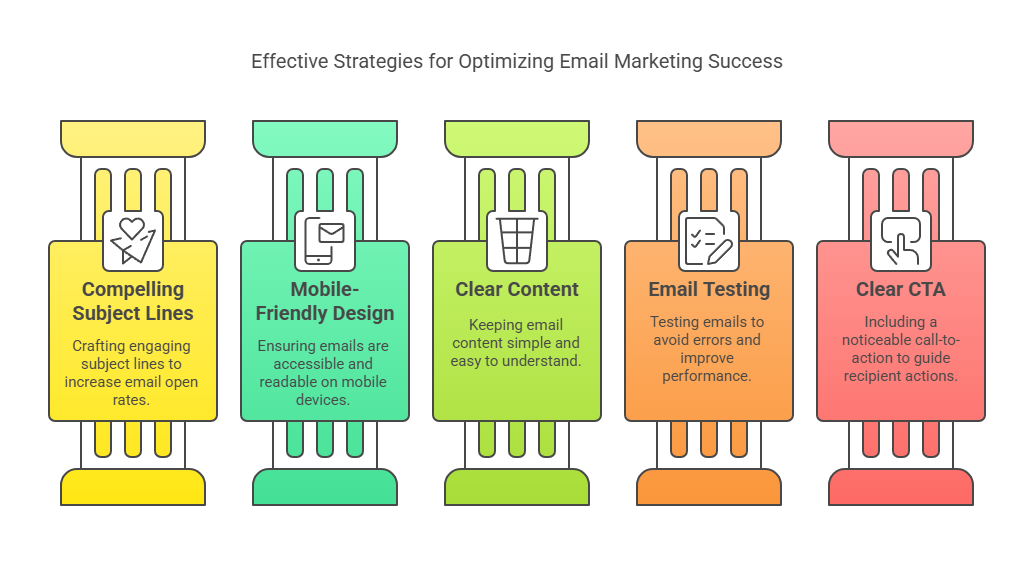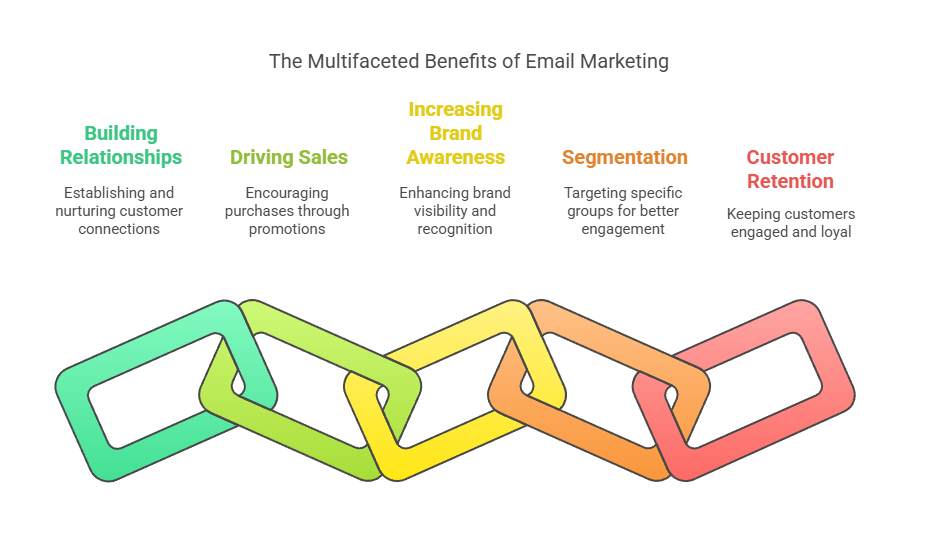Email marketing has become an essential tool for businesses, big and small. It allows companies to reach customers directly and effectively. With the right strategy, email marketing can help businesses grow and build lasting relationships with their audience. This article will discuss the key objectives of email marketing, why it is important, and how it can benefit your business.
What is Email Marketing?
Email marketing is the process of sending targeted messages to a group of people via email. It is used to inform, engage, and nurture relationships with customers. The goal is to send the right message to the right person at the right time. Email marketing can be an excellent way to communicate with potential and existing customers.
Key Objectives of Email Marketing
1. Increase Brand Awareness with Email Marketing
Brand awareness refers to how well customers know your brand. Email marketing helps increase brand visibility by keeping your business in front of your audience. By sending consistent emails with relevant content, you can remind customers of your products and services. This will help them recall your brand when they need it.
According to a 2023 study by the Direct Marketing Association, 81% of businesses say email marketing helps them build brand recognition.
2. Drive Traffic to Your Website via Email Marketing
Another important objective of email marketing is driving traffic to your website. A well-crafted email with a clear call-to-action (CTA) can encourage recipients to visit your site. Whether it’s to read a blog post, shop for a product, or sign up for a service, email marketing can be a great way to increase website traffic.
You can use engaging subject lines, compelling images, and informative content to prompt recipients to click the links in your emails. In fact, emails with a CTA have a higher click-through rate than those without.
3. Boost Sales and Conversions Through Email Marketing
Sales and conversions are the ultimate goals for most businesses. Email marketing can be a direct channel to increase sales. You can send promotional emails that offer discounts, limited-time offers, or new products. This encourages customers to make a purchase.
According to Mailchimp’s 2023 statistics, email marketing generates an average ROI of $42 for every $1 spent. This shows how email marketing is one of the most effective ways to boost sales.
4. Build Customer Relationships with Email Marketing
Building strong relationships with your customers is essential for long-term success. Email marketing allows businesses to keep in touch with customers regularly. By sending personalized emails, you can make customers feel valued. This helps to foster trust and loyalty.
Sending targeted content, like product recommendations based on past purchases, helps customers feel more connected to your brand. It also shows that you care about their needs.
5. Increase Customer Retention Through Email Marketing
It is often cheaper to retain an existing customer than to acquire a new one. Email marketing plays a vital role in customer retention. By staying in touch through regular newsletters or updates, you remind customers of your products or services.
Sending loyalty offers, reminders, or special promotions to your customers can help keep them engaged. A well-maintained email list will result in better customer retention and repeat business.
6. Promote Customer Engagement Using Email Marketing
Email marketing can help you engage with your customers. By sending surveys, polls, or feedback requests, you give your customers a chance to share their thoughts. This interaction builds a sense of involvement and connection.
Encouraging customer engagement through email can also increase the chances of receiving valuable insights to improve your products and services. This two-way communication strengthens your relationship with your audience.
7. Provide Valuable Content via Email Marketing
Email marketing allows you to share valuable content directly with your customers. Whether it’s informative blog posts, how-to guides, or helpful tips, your audience will appreciate content that brings value. The more helpful your emails are, the more likely customers will continue opening them.
Offering useful information builds credibility and trust with your audience. This ultimately strengthens their relationship with your brand and encourages them to become repeat customers.
8. Segment and Personalize Emails for Better Results
One of the most powerful features of email marketing is the ability to segment your audience. By dividing your email list into different segments based on interests, demographics, or behaviors, you can send highly personalized messages.
Personalized emails have a higher chance of being opened. According to a 2023 report by Campaign Monitor, emails with personalized subject lines have a 26% higher open rate. Segmentation helps you send relevant content, which leads to better engagement and conversions.
9. Measure and Analyze the Objectives of Email Marketing
Email marketing allows you to track and analyze your campaigns in real-time. By reviewing metrics like open rates, click-through rates, and conversion rates, you can assess the success of your campaigns.
Tracking results helps you understand what works and what doesn’t. By analyzing customer responses and behavior, you can optimize your campaigns to improve performance. This data-driven approach ensures your email marketing efforts are effective and profitable.
10. Automate Email Marketing to Maximize Efficiency
Email marketing platforms allow businesses to automate certain tasks. Automation can save time and effort, especially when dealing with large email lists. For instance, welcome emails, birthday emails, or abandoned cart reminders can be automatically sent to customers based on specific actions.
Automated emails ensure that you consistently communicate with customers without spending too much time on manual tasks. Automation also helps ensure timely communication, such as sending a reminder before an offer expires.
Best Practices for Achieving the Objectives of Email Marketing
1. Craft Compelling Subject Lines for Your Email Campaigns
The subject line is the first thing recipients see when they receive your email. A compelling subject line encourages recipients to open the email. Keep it concise, clear, and to the point.
2. Make Emails Mobile-Friendly for Better Accessibility
A large number of people check their emails on their mobile devices. Ensure that your emails are responsive and easy to read on smartphones and tablets.
3. Keep Email Content Clear and Simple
Make sure your content is easy to read and understand. Use short sentences, bullet points, and headings to break up the text. The simpler and more straightforward your message, the more likely customers will engage.
4. Test Your Emails to Ensure Success
Always test your emails before sending them out to your entire list. This allows you to check for any errors, broken links, or design issues. A small mistake can affect your email’s performance.
5. Include a Clear Call-to-Action (CTA) in Your Emails
Every email should have a clear CTA that tells recipients what action to take next. Whether it’s visiting your website, making a purchase, or signing up for a webinar, make sure your CTA is noticeable and easy to follow.
FAQs
1. What is the main goal of email marketing?
The main goal of email marketing is to build relationships with customers, drive sales, and increase brand awareness.
2. How can email marketing help boost sales?
By sending personalized offers and promotions, email marketing encourages customers to make a purchase, boosting sales.
3. Why is segmentation important in email marketing?
Segmentation helps you send relevant, targeted emails to different groups, leading to higher engagement and conversions.
4. Can email marketing improve customer retention?
Yes, by sending regular emails with valuable content and offers, email marketing helps keep customers engaged and loyal to your brand.
5. How can I track the success of my email campaigns?
You can track key metrics like open rates, click-through rates, and conversion rates to measure the success of your email campaigns.
Conclusion
Email marketing is a powerful tool that offers various benefits for businesses. From increasing brand awareness to boosting sales and improving customer relationships, the objectives of email marketing are vast and impactful. By following best practices and continuously optimizing your campaigns, you can achieve long-term success with email marketing.




